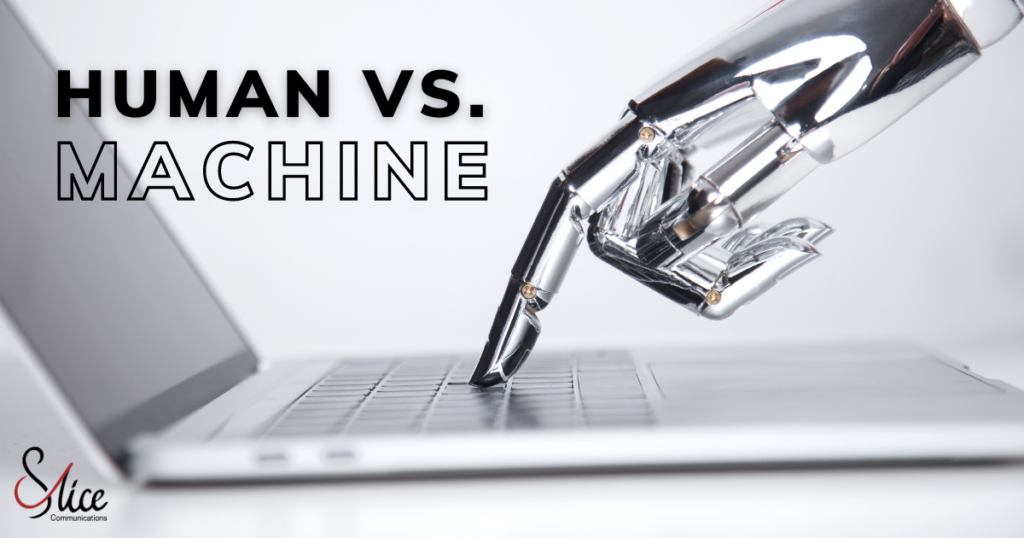
One of today’s hottest questions is: “Will AI replace marketing jobs?”
As communicators, what we do is so human.
We exist to move people – to capture their attention, their imagination, their motivation… and turn it into action. And despite the technology – including artificial intelligence – that has become so integrated into our lives, we (still) seek real, live connection. Like a calculator, AI and other “creative” technology converts our (human) input into a product or output… and it’s up to us to apply it appropriately, to check it, add our (human) flair and make it move and motivate people.
Technology informs our strategies from the very beginning: We start with data and research. We use listening software, benchmarking tools, data libraries and survey programs. The quality of the results and reports generated by all these tools depends entirely on our research design, our definition of the audience, the quality of our inquiry or our search parameters – and our interpretation and application of those results.
At every stage of a communication project, we are making complex, emotional, creative decisions. We are asking powerful questions. We are making judgments about what is “good” and then testing and retesting those judgments – analyzing the data to identify what is working and why, and what we need to adjust to close gaps and reach our goals. We take inspiration from previous case studies, standards and templates – but we improve them and infuse new life into them. In each of these cases, technology enhances our process, delivers us broader and deeper information, and expands our capacity.
Inventing and developing tools has been central to human experience, and to society – and in communication as in every other field, the quality of the product depends on the skill of the hands that wield them.
So, the more important questions we’re asking ourselves today: How will AI transform the way humans communicate? What skills and senses will we need to use these tools well? How can we shape the way tech enhances and changes our work – and our world?